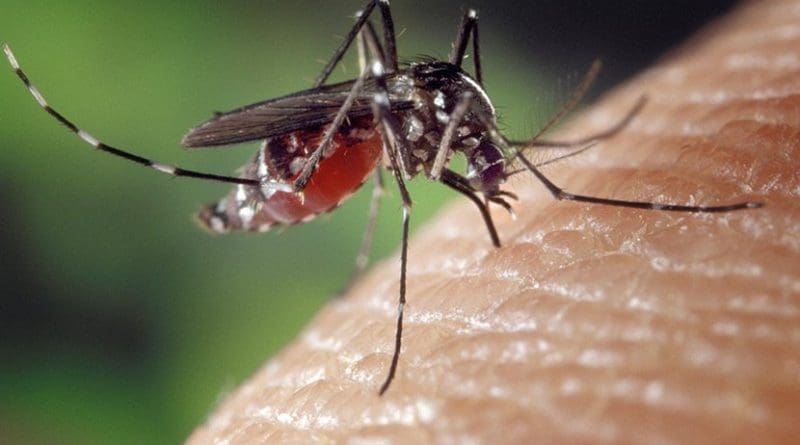Mosquito- And Tick-Borne Diseases Set To Flourish In Warmer Climate
New research presented at this year’s European Congress of Clinical Microbiology & Infectious Diseases (ECCMID) in Amsterdam, Netherlands (13-16 April) shows that the geographical range of vector-borne diseases such as chikungunya, dengue fever, leishmaniasis, and tick-borne encephalitis (TBE) is expanding rapidly.
Spurred on by climate change and international travel and trade, vector-borne disease outbreaks are set to increase across much of Europe over the next few decades–and not just in the temperate countries around the Mediterranean. Even previously unaffected areas in higher latitudes and altitudes, including some parts of northern Europe, could see an increase in outbreaks unless action is taken to improve surveillance and data sharing, and to monitor environmental and climatic precursors to outbreaks, alongside other preventive measures.
“Climate change is not the only or even the main factor driving the increase in vector-borne diseases across Europe, but it is one of many factors alongside globalisation, socioeconomic development, urbanisation, and widespread land-use change which need to be addressed to limit the importation and spread of these diseases”, says Professor Jan Semenza from the European Centre for Disease Prevention and Control, Stockholm, Sweden.
“The stark reality is that longer hot seasons will enlarge the seasonal window for the potential spread of vector-borne diseases and favour larger outbreaks”, says Dr Giovanni Rezza, Director of the Department of Infectious Diseases at the Istituto Superiore di Sanitá in Rome, Italy. “We must be prepared to deal with these tropical infections. Lessons from recent outbreaks of West Nile virus in North America and chikungunya in the Caribbean and Italy highlight the importance of assessing future vector-borne disease risks and preparing contingencies for future outbreaks.”
However, the authors caution, that given the complicated interplay between multiple drivers (eg, warming temperatures and international travel), weather sensitive pathogens, and climate-change adaption, projecting the future burden of disease is difficult.
Global warming has allowed mosquitoes, ticks and other disease-carrying insects to proliferate, adapt to different seasons, and invade new territories across Europe over the past decade–with accompanying outbreaks of dengue in France and Croatia, malaria in Greece, West Nile Fever in Southeast Europe, and chikungunya virus in Italy and France.
Worryingly, the authors say, this might only be the tip of the iceberg. “Mediterranean Europe is now a part-time tropical region, where competent vectors like the Tiger mosquito are already established”, says Dr Rezza.
Hotter and wetter weather could provide ideal conditions for the Asian tiger mosquito (Aedes albopictus), which spreads the viruses that cause dengue and chikungunya, to breed and expand across large parts of Europe including the south and east of the UK and central Europe.
Previously dengue transmission was largely confined to tropical and subtropical regions because freezing temperatures kill the mosquito’s larvae and eggs, but longer hot seasons could enable A albopictus to survive and spread across much of Europe within decades, researchers say.
The European climate is already suitable for the transmission of Lyme borreliosis and tick-borne encephalitis which are spread by ticks (primarily Ixodes ricinus)–with an estimated 65,000 cases of Lyme borreliosis a year in the European Union, and a 400% rise in reported cases of TBE in European endemic areas over the past 30 years (partly due to enhanced surveillance and diagnosis).
In the future, warmer winter temperatures, longer growing seasons, and earlier hotter summers could make conditions more favourable for ticks and increase the range of deer host populations, say the authors. Climate change models indicate that by 2040-2060, there could be a 3.8% growth in the habitat of Ixodes ricinus in Europe, with Scandinavia anticipated to be most at risk.
Moreover, improved climate conditions for sandflies–the main carrier of Leishmaniasis–could extend their geographical spread to southern parts of the UK, France, and Germany by the end of the 2060s.
“Given the ongoing spread of invasive mosquitoes and other vectors across Europe, we must anticipate outbreaks and move to intervene early”, says Professor Semenza. “Public health agencies need to improve surveillance, for example through early warning systems, increase awareness of the potential risks among healthcare workers and the general public, as well as adopt innovative control strategies such as community interventions.”

